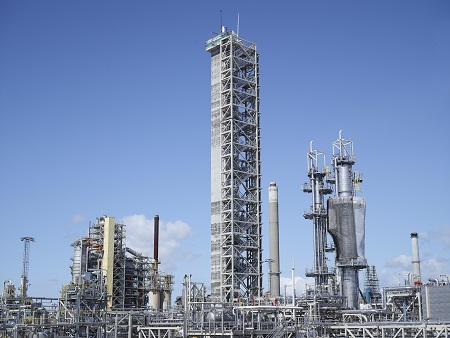09.08.2021
Promising test of new capture technology
– The test campaign at TCM using the open source capture solvent CESAR-1, a mixture of AMP and Piperazine, has been very promising, says Technical Support Manager, Muhammad Ismail Shah. – The preliminary results indicate significantly lower energy consumption and potential for lower costs when using a comparable solvent for capturing CO2. The test at TCM also shows that CESAR-1 can be handled properly in compliance with HSE requirements on an industrial scale and that the technical risks in the capture process are mitigated, he says.

It were the owners of TCM, Gassnova (the Norwegian state) and the industrial partners Shell, TotalEnergies an Equinor, who last year initiated the implementation of the test with CESAR-1. The reason is that the International Energy Agency, through its Greenhouse Gas R & D Program (IEAGHG), has requested a comprehensive assessment of new CO2 capture technologies in the energy sector and an evaluation of their potential to reduce costs associated with the operation of full-scale facilities.
TCM has previously conducted five open source test campaigns with the carbon capture solvent MEA (Mono Ethanol Amine). TCM has managed to capture up to 98 percent of CO2 emissions with aqueous MEA (a mixture of water and MEA). TCM has established a third-party verified baseline for both flue gas from the gas power plant (CHP) and the «refinery cracker» (RFCC) at the refinery at Mongstad.
– Against this background, we have had a very good basis for comparison for the test with CESAR-1 both in terms of efficiency, energy consumption and technical risk in the process, Shah emphasizes.
Extensive material after the campaign
CESAR-1 is an open source solvent, a mixture of Piperazine and AMP. During the campaign at TCM, the properties of this solvent were tested in a process with CO2-containing flue gases for a total of approx. 8.000 hours. This has yielded a large amount of useful test results which are now being analysed and crunched.
– Our preliminary analysis from the test indicate that the energy consumption when using CESAR-1 gave a reduction of 15 – 20 percent compared to MEA under comparable operation conditions. We also have demonstrated that the technical risks of using CESAR-1, which mainly relates to the handling of Piperazine, could be carried out in a full compliance with HSE requirements. We have got good insight on important aspects of using this technology regarded to health, safety and environment.
In the test, a capture of about 98 – 99 percent of CO2 from the flue gas was demonstrated, which means that it is possible to reduce CO2 emissions from the flue gas significantly with a relatively low energy consumption. Through the test, TCM also has proven that it is possible to reclaim degraded CESAR-1 solvent by using thermal reclaiming technology.

Will receive good reception
Shah believes the preliminary results from the CESAR-1 campaign will be well received in the carbon capture industry. They will form an important reference in the work for further development of capture technology with lower costs.
The preliminary results from the campaign were first presented at TCCS (Trondheim Conference on CO2 capture, transport and storage) on 23 June. Additional presentations with results in a more elaborated form will be given at conferences to come and in professional journals. TCM also will exchange experiences and results in the ongoing collaboration with NETL (National Energy Technology Laboratory) in the US, which will contribute to further development of capture technologies with lower costs.


